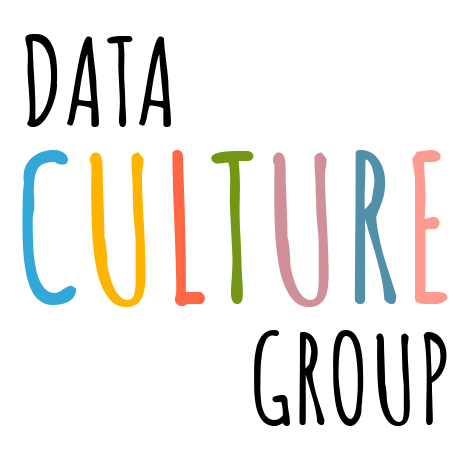Throughout our collaborative creative research process, our team investigated multiple theatrical and data visualization methodologies that can be leveraged in pursuing our recurring central goal: How can we create theatre-based experiences that bring people together around data in social contexts, in order to build empowerment, challenge power structures, and build capacity to speak the new language of data? This blog post summarizes some of what we’ve learned from deeper exploration of the history of theatrical engagement, and interviews with some current practitioners.
Building on History
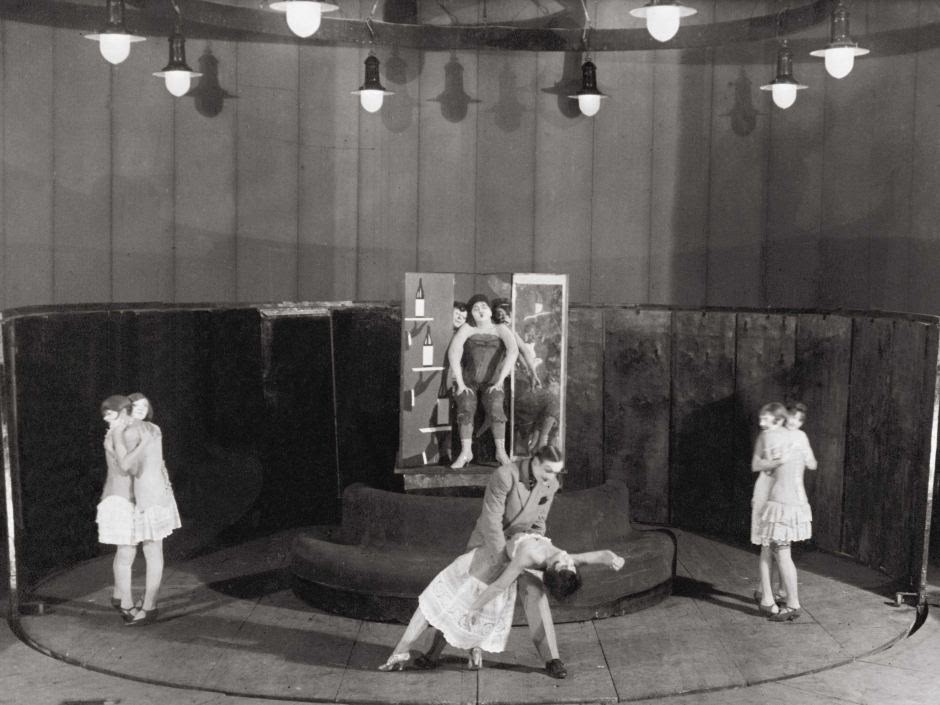 Source: Bertolt Brecht’s ‘Three Penny Opera’
Source: Bertolt Brecht’s ‘Three Penny Opera’
We were particularly interested in participatory techniques that engage audience members in dynamic ways — from inviting participants into a dialogue with performers, to involving them in the decision-making process of performances. Historically, performance that breaks the metaphorical and infamous “fourth wall” has been used to incite social change, and rouse audience members into action. Although not well known outside of the theatrical realm, the traditional function of drama as a form of passive cathartic “entertainment” is dismissed or rejected by many well-known contemporary playwrights. Famous 20th century playwrights such as Atonin Artaud and Bertolt Brecht, known for “Theatre of Cruelty” and “Epic Theatre” respectively, used different means to shock, overwhelm, or implicate audiences to play a role in the theatre. These playwrights rejected passivity in favor of facing realistic implications of their theatre work. In our work, a lot can be learned from studying the outcomes of participatory theatre and data visualization methodologies. We initially looked in depth at forms such as Theatre of the Oppressed, Playback Theatre, and Verbatim Theatre, and outlined elements that would translate into the world of “Data Theatre”: blurring the traditional delineations between audiences and performers, and welcoming the narratives that emerge from interaction. Our hypothesis is that this can empower community groups to reflect, respond, and react to data that they see as “representative” of their experiences.
In my last blog post outlining the outcomes of our prototype workshops, we summarized some of the key takeaways from our activities and participant experiences. In tandem with these workshops, we interviewed two experts in the fields of playback theatre and information design, hoping to inform our process through a multitude of mediums. These conversations enabled us to continue to explore the parallels of our work with the theatrical methodologies we originally studied, and discover new potential for interdisciplinary collaboration in working towards building and sharing a data theatre “activity guide.” Our first interview was with Christopher Ellinger, Founder and Director of True Story Theater, a nonprofit playback theatre company that offers improvisational performances and workshops to community groups, businesses, and individuals in New England and California. Our second interview was with Frederica Fragapane, an award-winning Italian information designer, whose research on the mutualistic relationship between data visualization and performance inspired much of our initial observations. The opportunity to speak to two dynamic experts in both the practitioner and theoretical realms of our research allowed us to deepen the connections we saw in our investigative stage, and further our usage of interdisciplinary methodologies in designing and testing activities for our community partners. For this reason, our team thought it was imperative to highlight the parallels we drew in the interviews, and further the conversations we started around these methods.
Intentionally Design Your Invitations to the Audience
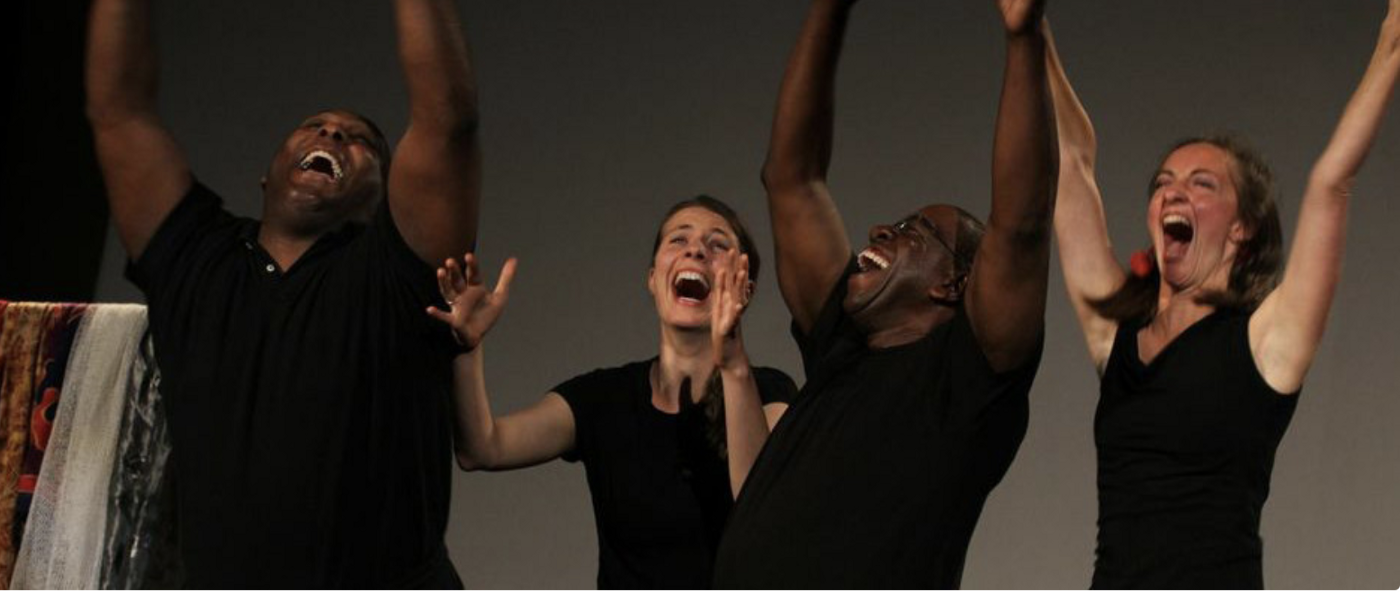 Source: About True Story Theater
Source: About True Story Theater
Our first interview with Christopher, the director of True Story Theater, allowed us to return to the conceptualization behind the experience of “shared storytelling,” which influenced the structure of the reflective components of our prototype workshops. Playback theatre allows participants to share their personal experiences in a dialogue with performers, that are then “played back” to them through modalities such as moving sculptures, shorts skits or scenes, group choir, etc. Participants are encouraged to reflect on their experience watching the piece, and to reveal if it changed or informed their perspective on the experience. This deeper understanding of participant experience is designed to build self-awareness and promote empowerment, reconciliation, and decision-making. True Story Theater’s mission of promoting social healing through theatre aligns with our goal of building empowerment and communicative tools through interacting with data, breaking away from the inaccessible “data experiences’’ that often characterize community relations. Christopher shared how True Story grew out of the Improv Theatre Lab, adopting playback theatre due to its “social impact.” He described how his group began diving into oral traditions inherent in the human experience, and how to modernize the practice of “telling a story and being heard in a deep way.” The ensemble needed to be trained to draw out the “bigger social context of the stories so it is not just the individual story.” This remark immediately resonated with our impetus for exploring data theatre — the notion that traditional data representations only present a narrow snapshot of something like food insecurity, and the potential to “rehumanize” or “ground” data in the social context of the real people it represents. Christopher argued that playback differed from Theatre of the Oppressed and other methodologies in that it honors the authentic personal experience of participants, and allows other observers to relate through reflecting on their own social identities. The concept of opening space and bridging the gap to authentic experience provides an important clue in our work engaging with data how can we honor individuals through the lens of a collective story? Data is packaged as a statement on a collective group or population, and finding ways to honor the individual experiences is imperative to our work.
Christopher also shared the structure of a True Story workshop with our team, giving us valuable insight into how to foster space for the ideal playback environment. Their warm up usually features an activity to create a physical connection with the group — which was adapted for both the Zoom and in-person environments. In our workshops, we noticed that the warm-up activities played a large role in setting the tone for engagement with the provided datasets, and the outcomes of each activity. Our conversation with Cristopher cued us into the importance of adapting our warm-up activities for the specific community groups we work with, honoring the contextual space (academic, business, social/religious, etc.) He also shared the value of a warm-up activity that introduces a useful theatrical tool to the group, such as a question prompt or mental exercise. This insight will be a part of our continued conversations in how to translate our work outside of the theatrical environment, and into environments with community partners (which may have limited exposure to participatory theatre toolkits). The interplay between “personal and collective” storytelling may not feel natural at first, but establishing an environment that can assuage fear or hesitancy may encourage participants to accept this invitation.
Furthermore, Christopher shared some challenges commonly faced by playback theatre artists, which may arise as we translate our work outside of the university. Christopher acknowledged that “We expect every topic to meet some emotional resistance,” and that past experiences must be acknowledged and validated in order to help release them. Some of his advice:
- Creating emotionally safe spaces can facilitate work with traumatic or difficult topics.
- Utilizing small groups to reflect on a less intimidating scale is one way to enable story-sharing, as many individuals fear the spotlight when tapping into vulnerable places
- Frequently, the opportunity to resonate and respond to representations of other experiences within a group also helps some participants overcome resistance or hesitation — within limits.
- Hearing other painful and traumatic experiences could trigger collective social trauma, and it is important to tread lightly.
Christopher noted, “We are not looking to hit your over the head with traumatic experiences. We are looking to find the right balance of hearing what the reality is of other people’s pain and struggle with the incredible resources within the individual and within the collective groups.” Finally, Christopher emphasized the importance of recurrent check-ins and evaluations with people on multidimensional levels, ranging from small group discussions, big group discussions, and even stand-alone reflection events. In utilizing some of these tools to open the door of data embodiment, we must be mindful in creating space for careful reflection of raw, vulnerable, and often unfamiliar emotional experiences that may arise in the process. Using these techniques to aid in our goal of reconnecting traditional data representations with authentic human experience will help us build empowerment and challenge power structures; however, we must take into account the necessary scaffolding and infrastructure.
Data Viz and Theatre Can Reinforce One-Another
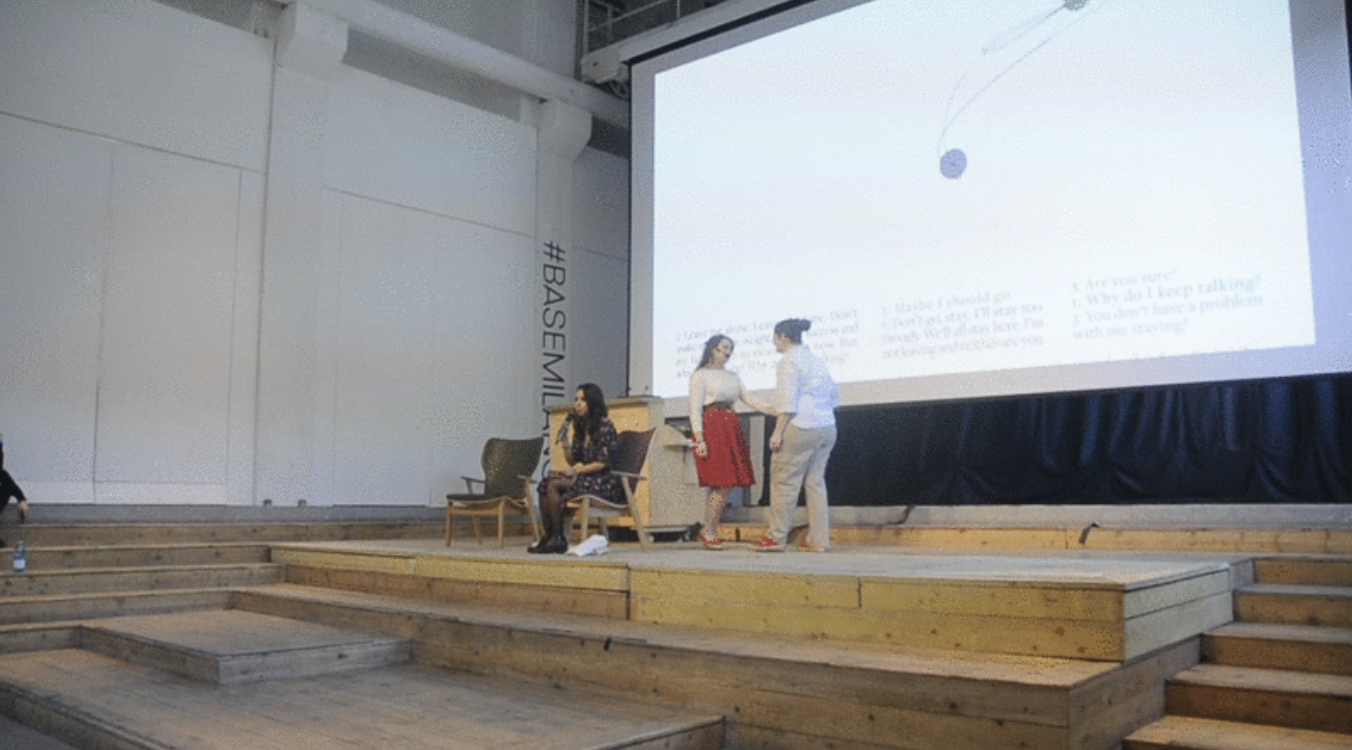 Source: Data visualization and theatre: a story of mutualism by Federica Fragapane
Source: Data visualization and theatre: a story of mutualism by Federica Fragapane
Our second interview, with information designer Federica Fragapane, focused on interdisciplinary context of our work. Learning about the interplay between Federica’s work in the information design realm and in the production of her original plays gave us valuable insights in how a multi-faceted creative toolkit can enhance the experience of audience members/participants. While it may seem that this cross-disciplinary approach is complex and lofty, developing data visualization tools alongside her performances clarified the impact of her work through engaging multiple senses. Federica described her frustrations with the marked difference in perceived value of her originally separate work in information design and theatre, and how this influenced her journey into combining them. While her work in the theatre was one equal side of her career passions, she acknowledged that the arts were not valued or supported in the same way in her community as her work in information design for crime analysis. Federica’s explorations in combining elements of graphic and visual design with theatre were born out of this frustration; she discovered that her work in the data viz and theatre fields influenced each other:
“Telling stories is wider than just numbers.”
Designing visual shapes based off of character relationships, through height and distance, helped her understand her characters on a deeper level. From studying the length of words and sentences as well as developing sensors to detect and project movements behind the actors visually, Federica discovered that the resulting visualizations amplified what was happening on stage. She noted, “I like theatre to be straightforward for the audience,” and “bringing organic shapes to data… can really help in giving them a little more life and showing them as something that is not as abstract as a number.”
Hearing these outcomes of her work resonated with our goal of opening paths of communication of data through theatrical embodiment. Despite data becoming more central to decision making and public understanding, current channels for “speaking with data” are too narrow to engage a broader public. This inaccessibility is perpetuated by an ignorance towards a broad range of engagement with information across different populations. Exploring interdisciplinary modalities aids in creating a clearer, more straightforward communication tool for communities, who may not have had the ability to engage with this data before. Furthermore, Federica highlighted how the aesthetic factor of beauty in her work contributed to her goal of having a heightened emotional impact on audiences through combining data visualization and theatrical modalities. She noted that beauty is inherent in the things she does, and can be a good way to create interest in these topics. The senses are naturally drawn to aesthetic and beautiful things, as they create curiosity and draw attention. This immediately reminded our team of how many participants in our workshops associated the word data with negative connotations — cold, hard, distant, “math” thinking. Exploring these theatrical methodologies suddenly seemed worthwhile, as the arts provide an association of aesthetic beauty that can encourage newfound engagement and interest in datasets. In addition to drawing audiences closer to her work, Federica noted that data literacy is typically overwhelming and not easy to understand. She remarked that especially in our current times, “people will be further surrounded by data in the coming years…it can be dangerous.” Integrating data softly in other parts of their daily lives allows participants to see data visualization as not something that is “too far” from daily life. For Federica, exploring organic shapes created by actors highlights the organic nature of theatre — it cannot be repeated the same way each time. Seeing these shapes come alive helps her audiences develop this perspective in their day to day interactions. In our work, facilitating the embodiment of data will allow participants to engage with information in new ways, and enable individuals to influence and interact with the social and political policy that results. Hearing these shared outcomes and goals in Federica’s work encouraged us to continue to explore theatre for its aesthetic and artistic qualities, which have merit on their own.
There is Resonance Here
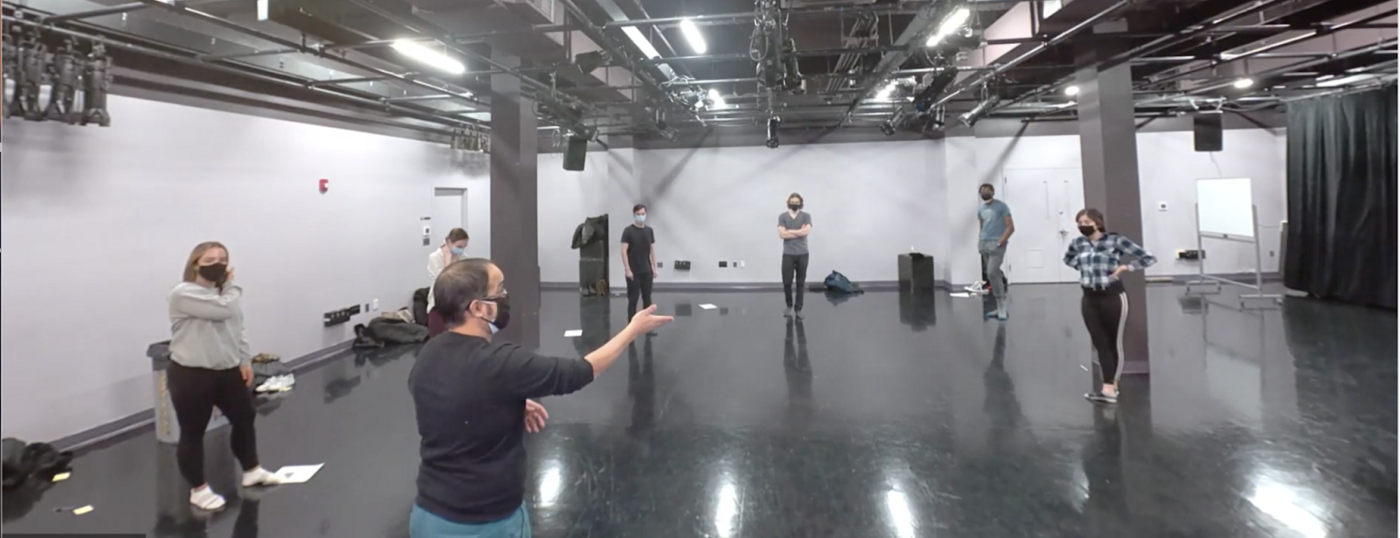
The strong connections and parallels drawn in these conversations with experts resonated with both our research and our prototype workshop outcomes. Participants reflected that our activities echoed what they know of the world of theatre:
- “It’s like theatre — when you buy into it, you buy into it. There’s no way you can force someone to buy into it”
- “Let the audience have freedom to take from it what they are going to take from it”
- “You’re going to draw your own conclusions.”
Our activities also exposed how perspectives changed throughout engaging with collective portrayals of the human experience: “What made it so hard was the embodied assumptions I carried with me as a result of my privilege and status in society.” From these conversations with experts, the bonds between the participatory theatre methodologies we studied have strengthened, and we will continue to reflect and test our activities within the context of data embodiment for social empowerment.
Acting is often defined as living truthfully under imaginary circumstances. If one were to commit to this belief without boundaries, then we may view the entire world around us as a script — one in which we are all living our respective truths. Challenging the status quo may only be possible by reading between the lines of the data’s script.

